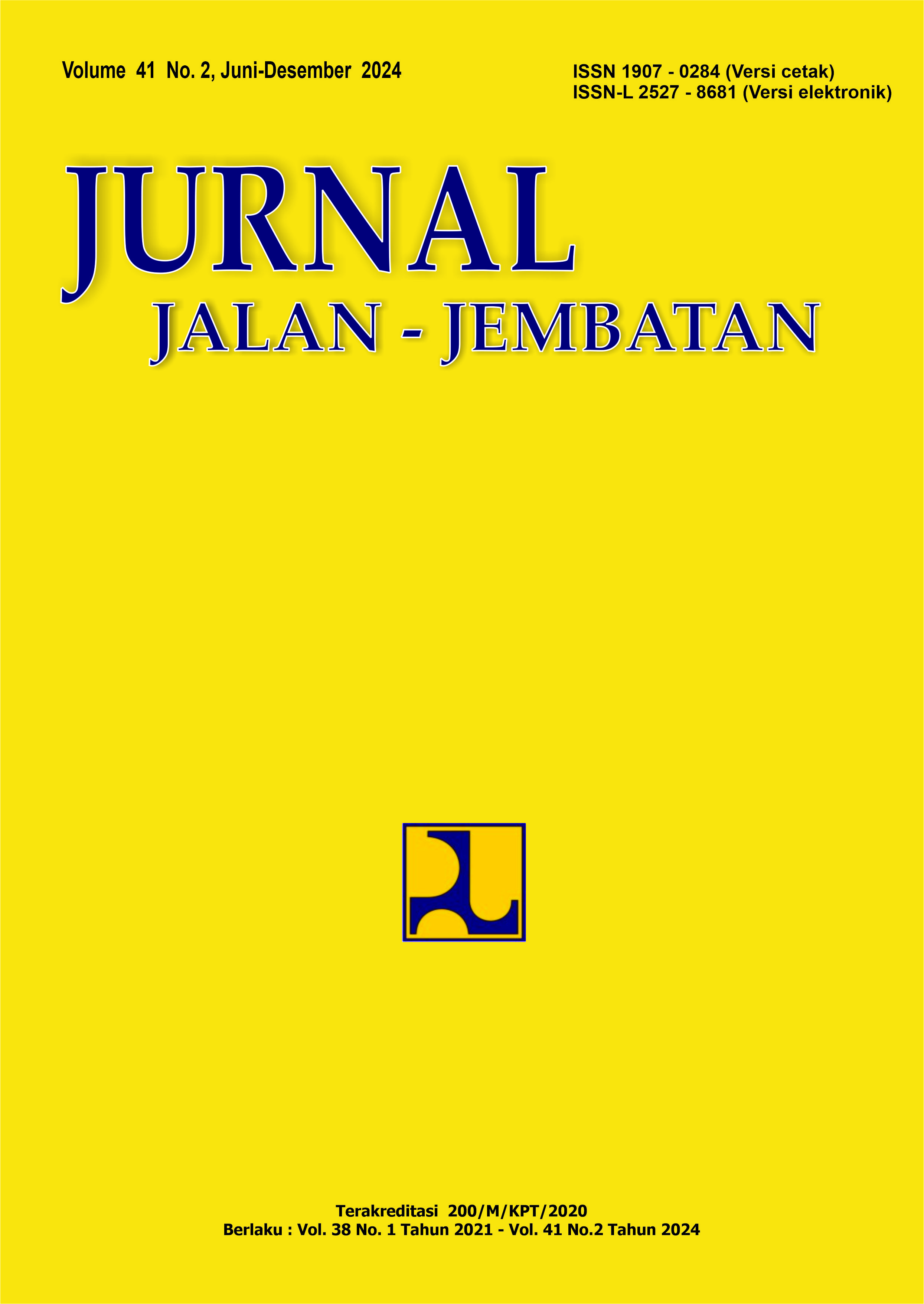PERFORMANCE-BASED EVALUATION OF CONCRETE INTERCHANGE BRIDGES USING NON-LINEAR TIME HISTORY ANALYSIS
Main Article Content
Abstract
One of the elements in the bridge structure is prestressed concrete. Bridge performance evaluation is needed to determine the repair method for the element if there is a potential for construction failure. This study aims to design a prestressed concrete bridge using midas Civil software. The bridge structure is modelled along with the working loads, which include Dead Load (DL), Super Impose Dead Load (SIDL), and earthquake loads based on SNI 1725:2016 and SNI 2833:2016. This study uses a non-linear time history analysis method (non-linear time history analysis), and design parameters are taken from the NCHRP 44 and 949 references. Midas Civi software is used for the analysis. Design parameters include concrete material strain, steel reinforcement, and drift on lateral retaining elements (bridge pillars) composed of reinforced concrete material. The Terbanggi Besar Interchange Bridge (IC) STA. 139+925 on the Bakauheni – Terbanggi Besar Toll Road in Lampung Province is used as the focus of the study. This study identifies the limits of bridge structural damage during the post-earthquake to determine the performance of the bridge structure. Seven pairs of ground motions were installed, representing the conditions at the bridge site. The results of this study indicate that the performance level of the Terbanggi Besar IC Bridge Structure is at the whole operational performance level. This level describes the condition after receiving the earthquake load. The bridge condition can operate optimally, and the structure is still elastic. This study suggests using similar methods on other bridges to hinder bridge performance and anticipate building failure.
Article Details

This work is licensed under a Creative Commons Attribution-NonCommercial-ShareAlike 4.0 International License.
Authors who publish in this journal agree to the following terms:
-
Authors retain copyright and grant the journal the right of first publication with the work simultaneously licensed under a Creative Commons Attribution License, which allows others to share the work with acknowledgment of the work's authorship and initial publication in this journal.
-
Authors may enter into additional contractual arrangements for the non-exclusive distribution of the journal's published version of the work (e.g., post it to an institutional repository or publish it in a book), with acknowledgment of its initial publication in this journal.
-
Authors are permitted and encouraged to post their work online (e.g., in institutional repositories or on their website) as it can lead to productive exchanges, as well as earlier and greater citation of the published work.
Each submitted manuscript must be accompanied by a "Manuscript Originality Statement" and a "Copyright Transfer Statement".

